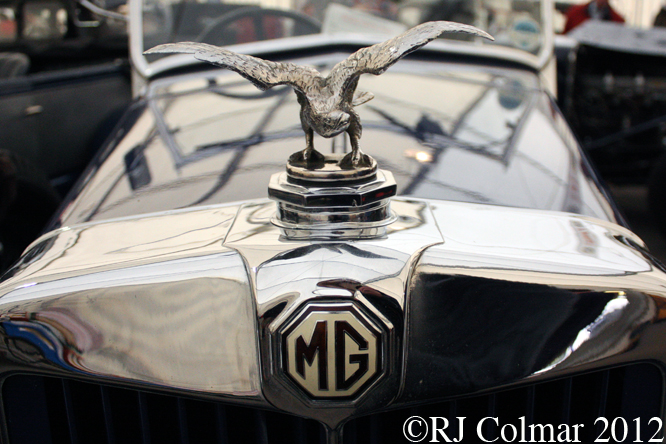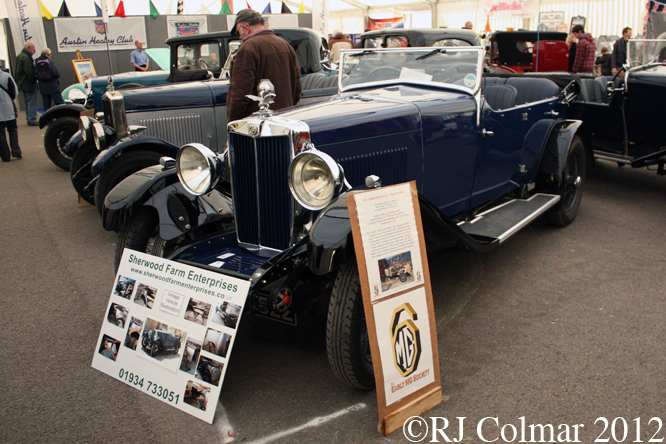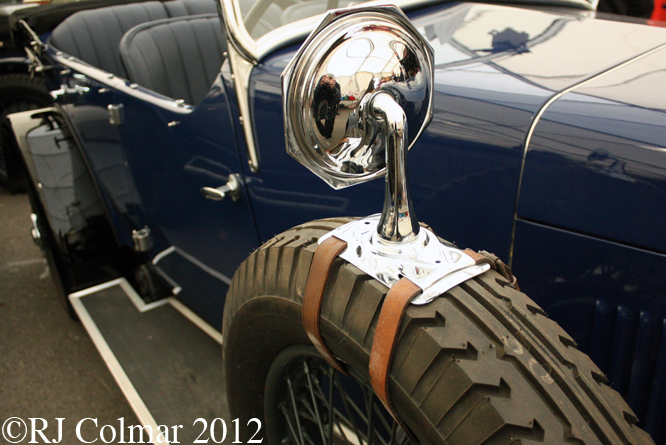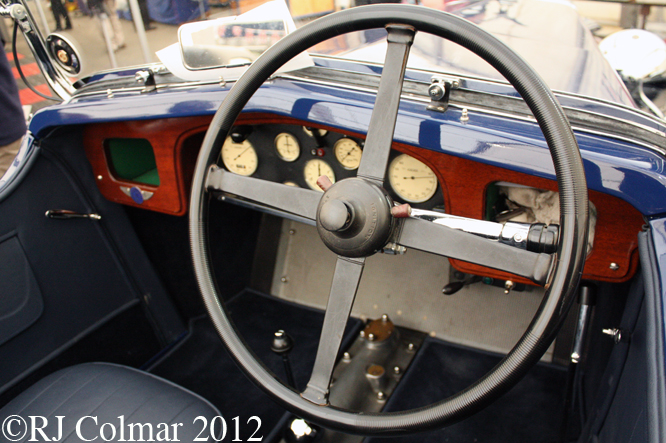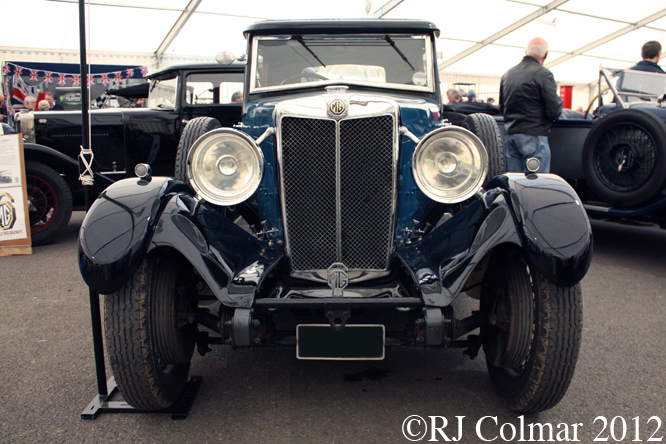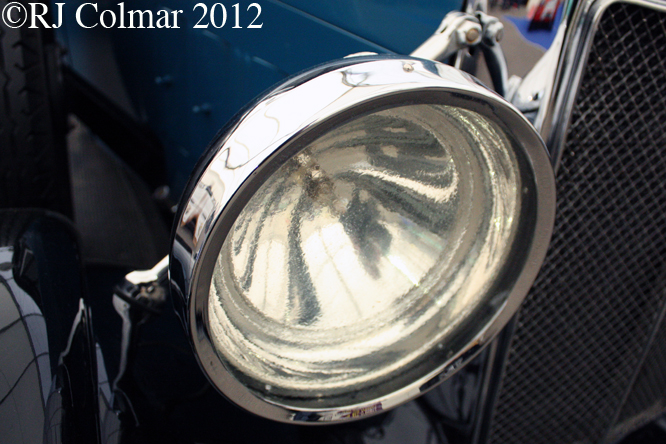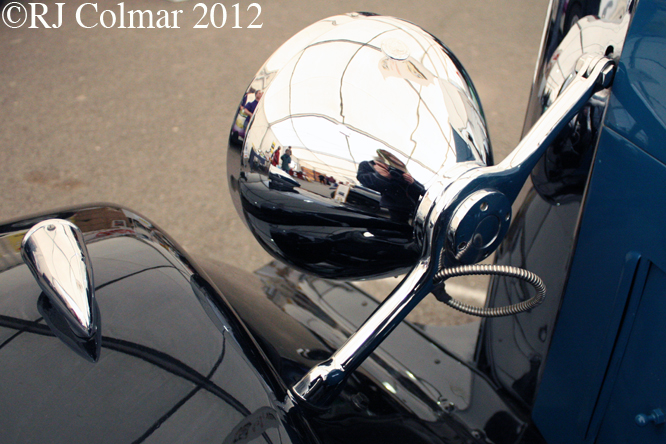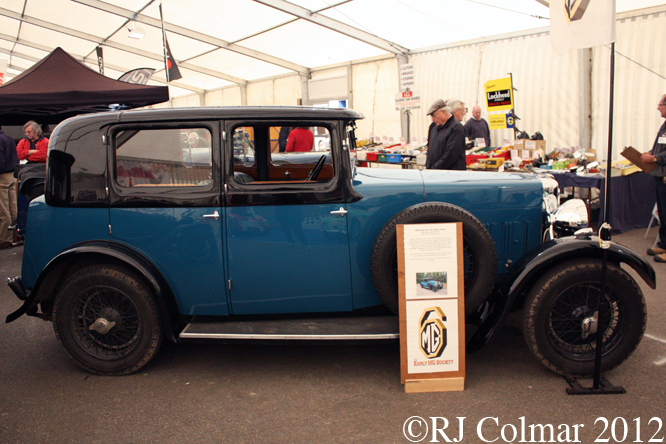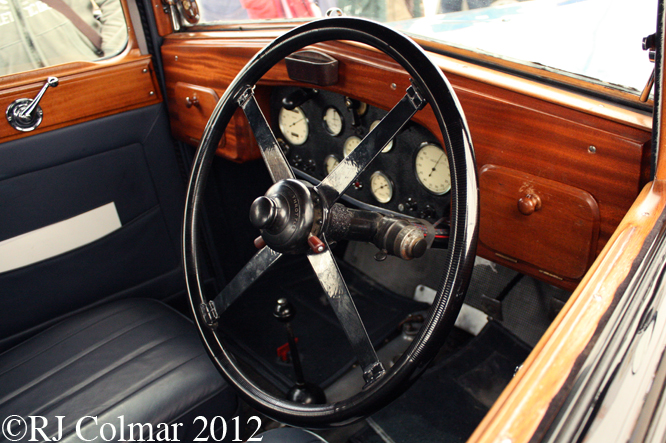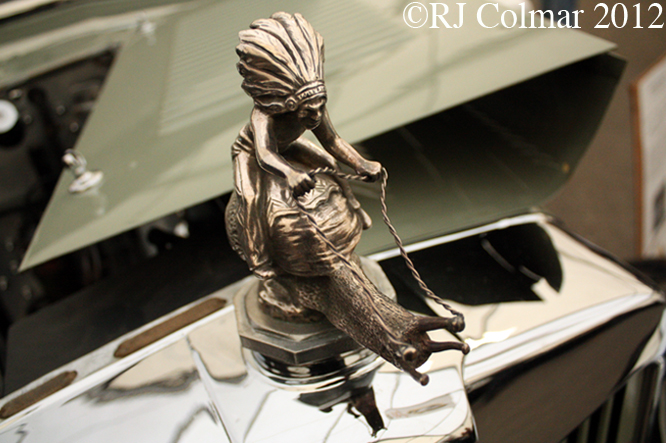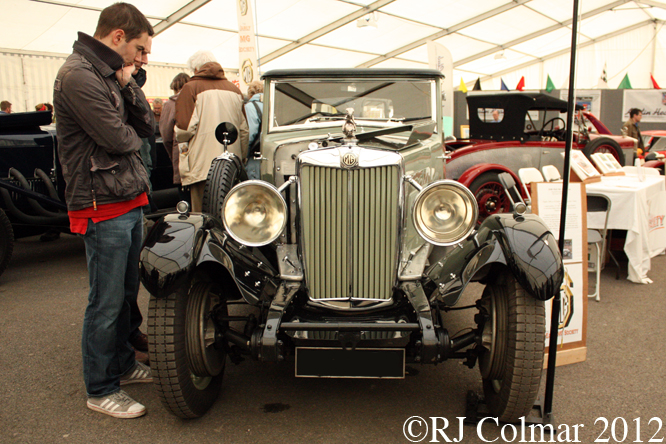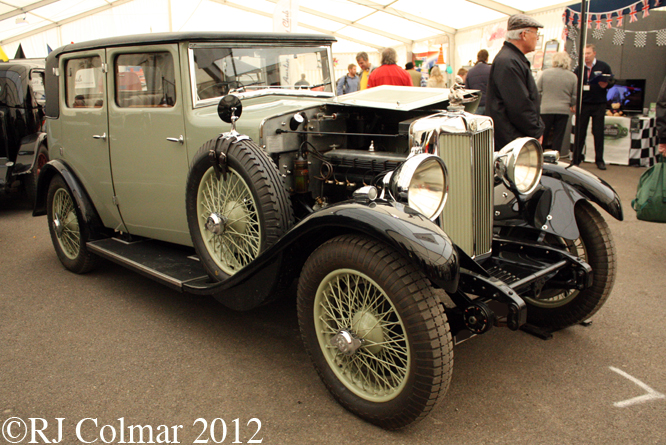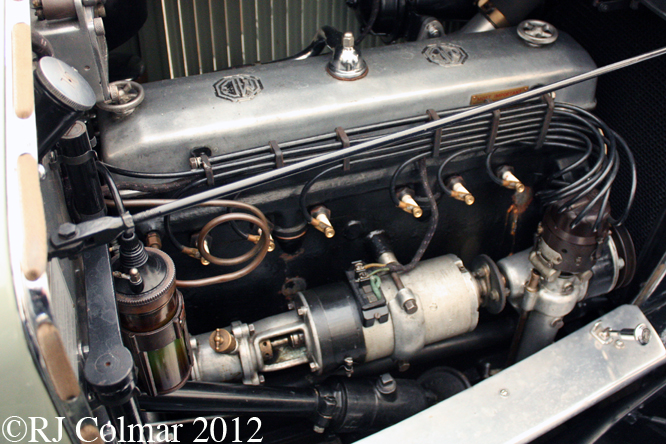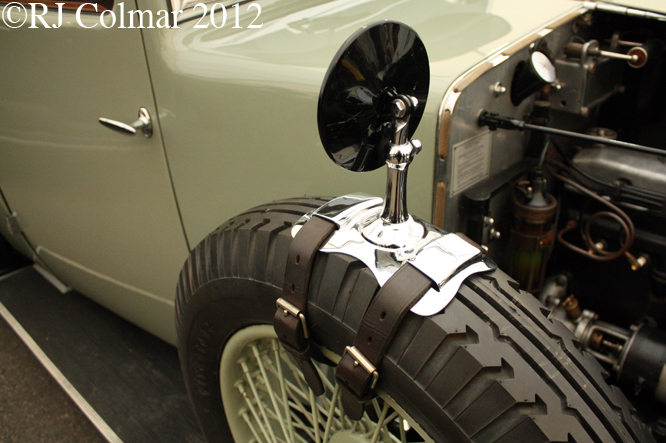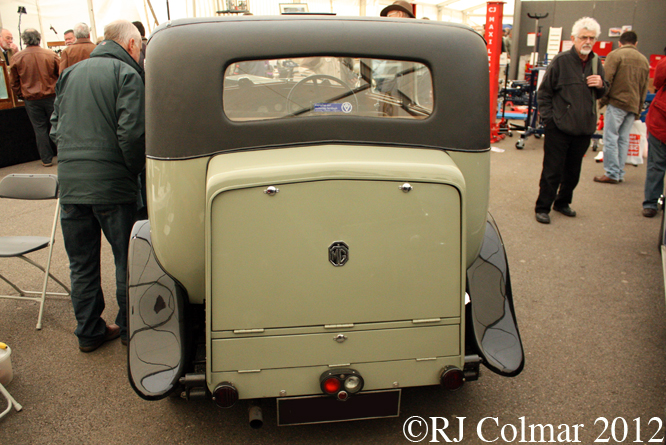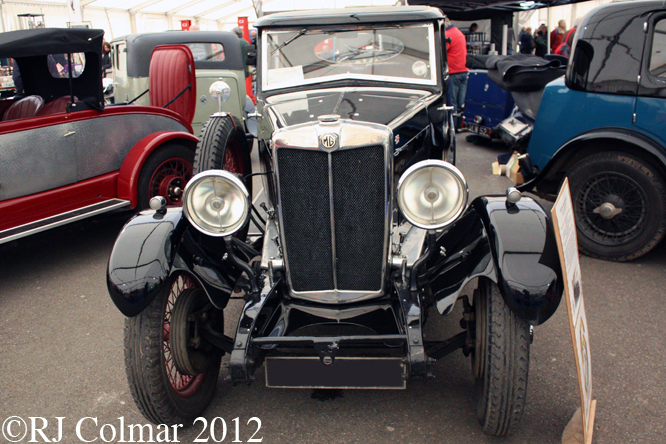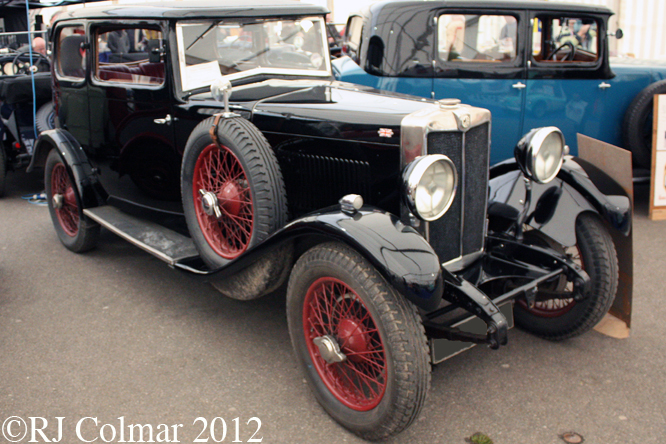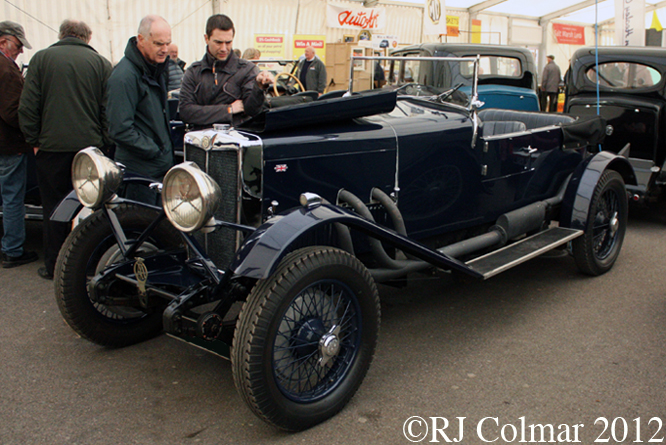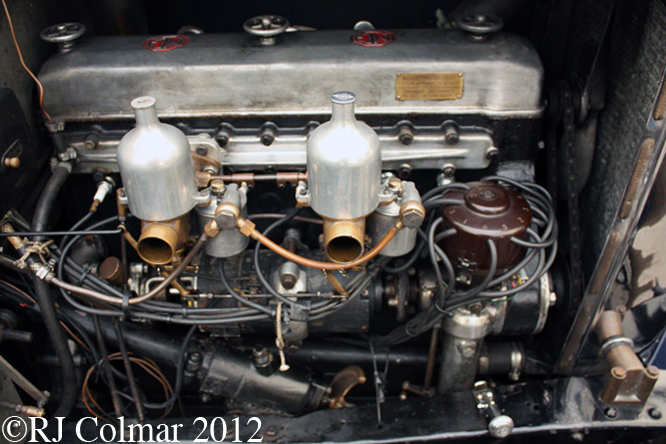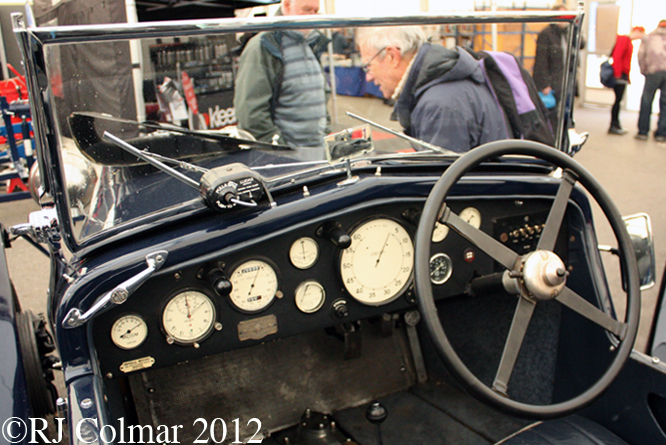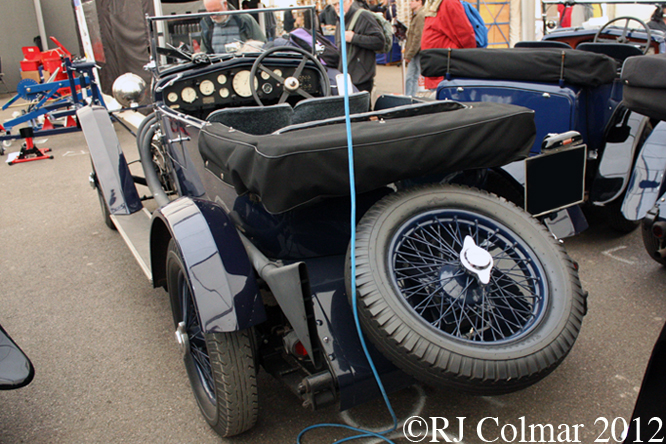Built in August 1930 with a fixed head coupé (FHC) body today’s featured 18/80 Sports Six sat around for three whole before it was first registered in October 1933.
This car was then damaged a year later by the MG Works on a service run.
After being stored in first a barn and later a coal cellar this car was rescued in 1984 minus body.
Restoration complete with a cable operated handbrake operating on all four 14 inch drum brakes took 27 years during which time the car also changed ownership.
With a 17.7 hp six cylinder motor driving a four speed gearbox a top speed of 74 mph was quoted for this vehicle which cost £525 when new.
Thanks for joining me on this “Four Wheel Handbrake” edition of “Gettin’ a li’l psycho on tyres” I hope you will join me again for a Continental Curiosity tomorrow when I’ll be looking at an NSU Prinz. Don’t forget to come back now !

